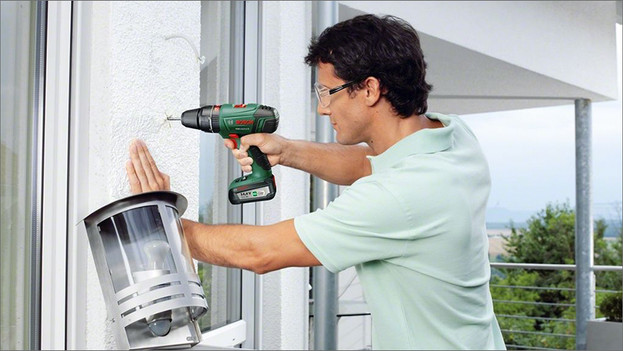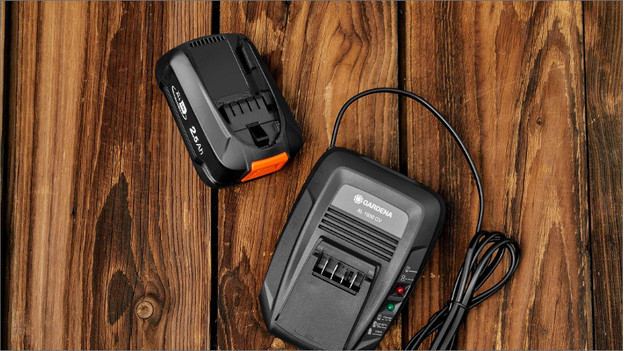
Get the most out of the battery for your (garden) tools
Get started with your battery

It's easy to properly maintain your battery. Follow these tips to extend the lifespan of your battery.
- Tip 1. Fully charge your battery for the first use.
- Tip 2. Charge your battery at room temperature.
- Tip 3. Use your battery for as much as possible.
- Tip 4. Avoid very high or low temperatures.
- Tip 5. Charge your battery partially.
Tip 1: fully charge your battery for the first use

Fully charge your battery when you use it for the first time. The charging time depends on the number of amps. For example, a battery of 5.0A needs a longer time than one with 1.3A. After you emptied and charged it a few times, it's really activated.
Tip 2: charge your battery at room temperature

With regular use, it's smart to charge the battery at room temperature. The ideal temperature lies between 10 and 40°C. When it's full, you can take it off the charger. You have to make sure the battery never runs out completely, so charge it in between.
Tip 3: use your battery as much as possible

Regularly draining and charging a battery results in longer lifespan. You can do so by working in your garden often, for example. If you have multiple batteries, we recommend to switch them as much as possible. That seem illogical, but you give the battery the chance to cool down this way. That's because heat has a negative effect on the lifespan of a battery.
Tip 4: avoid very high and low temperatures

Batteries are sensitive to the heat and the cold. The capacity decreases if you expose the battery to extreme temperatures. That's why you shouldn't put in in the bright sunlight, or in a hot car. Rain, frost, and moisture are also bad for your battery. It's smart to keep the battery indoors during the winter. That way, you can be sure you'll enjoy your battery for a long time.
Tip 5: charge your battery partially

Aren't you going to use the battery for the next 6 months? Make sure the battery is partially charged before you store it. For garden tools, that's often the case during the colder months. The winter is the ideal to maintain your garden tools.


